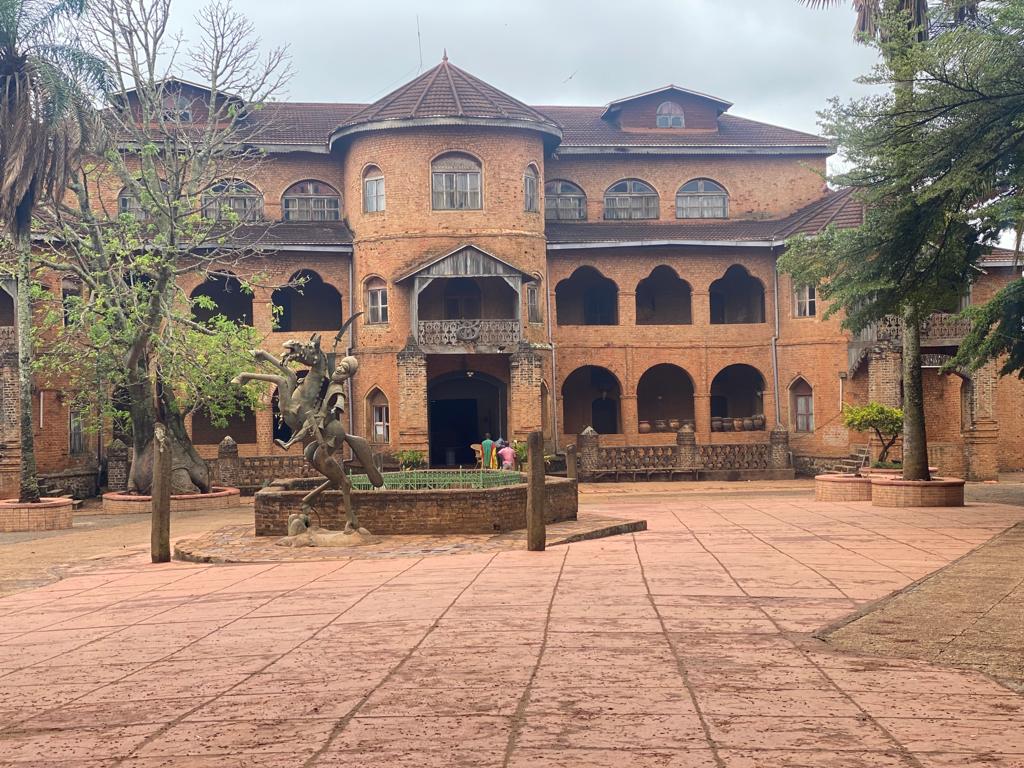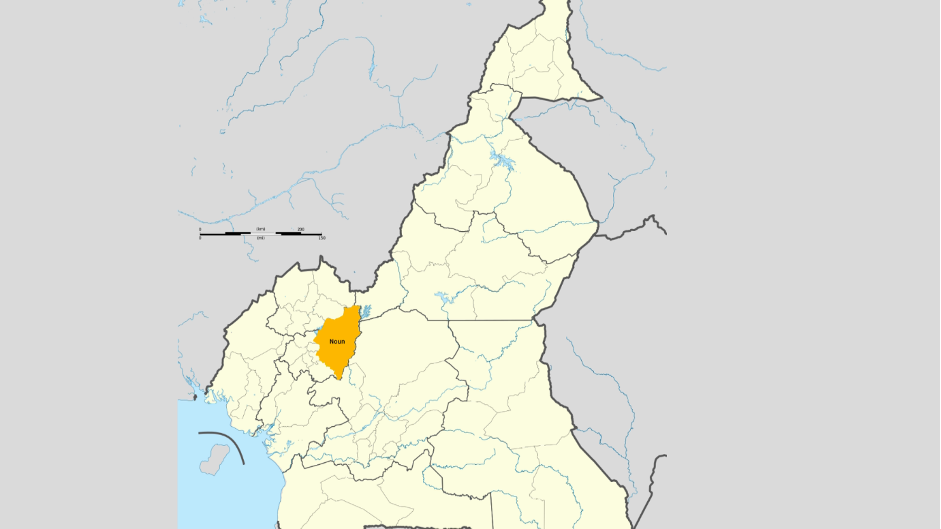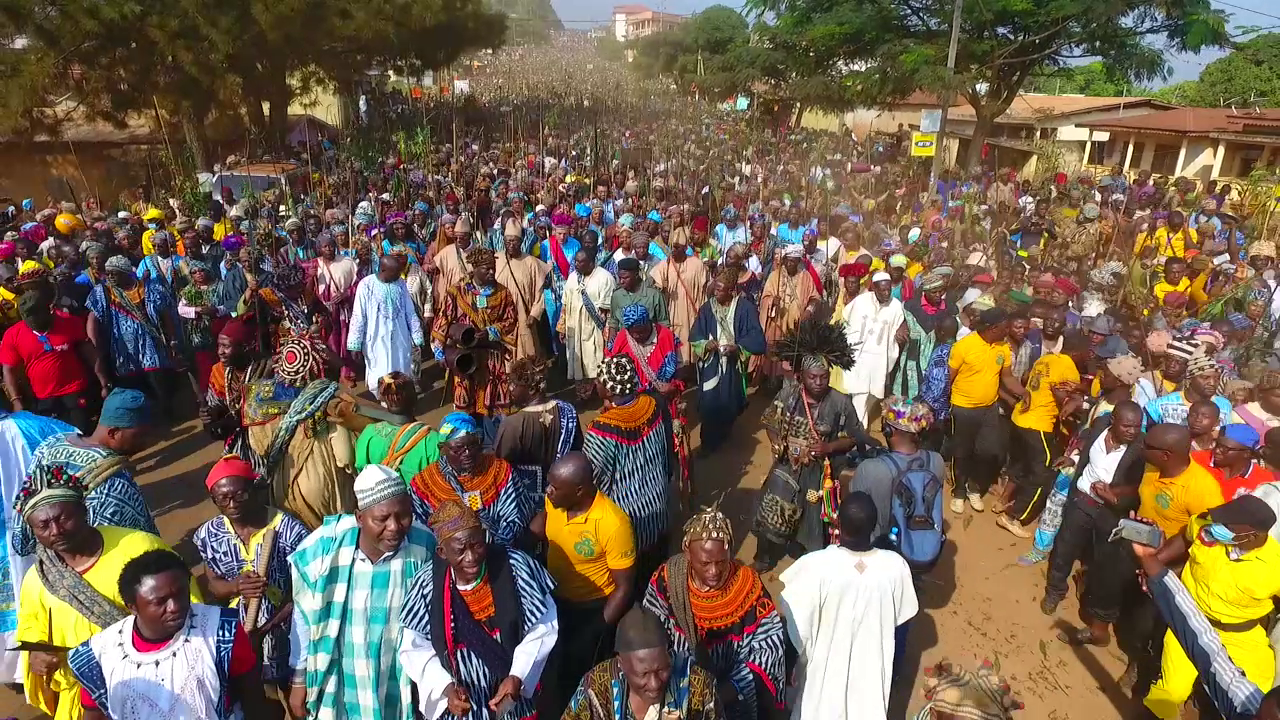The Bamoun Kingdom

The Bamoun Kingdom, located in the mountainous region of western Cameroon, has existed since 1394. This Kingdom which has forged its unity since the end of the 14th century (before the arrival of the colonists) occupies more than half (55.34%) of the Western region. The Bamoun Kingdom has preserved all the facets of its ancestral organization, in spite of all the events that shook Cameroon in the XIX Century.
It was founded by a Tikar prince, named NCHARE YEN, who left Bankim (Rifum) in the Mbam valley with his brothers (Mfobam or Nditam and Nguonso), uncles, his mother (YEN) and some servants to explore new lands. Nchare Yen will create the Bamoun Kingdom, Mfobam will found in its turn the Mbamois Kingdom and Nguonso will create the N’SO Kingdom. They will all settle a few kilometers from their father, the sovereign Tikar.
Attracted by the rich lands of this territory, Nchare progresses in the kingdom with 7 companions, namely: Nji Monshare, Nji Kumnjuo his half-brother, Njianga a warrior and at the same time brother-in-law of Nchare, another warrior also named Njianga, Njimanka and Nji Monanka, friends of Nchare and Njiamfa, his nephew. They went to the village of Njimom where Nchare, son of Princess Yen, cleverly overthrew the chief of the village and established himself as chief.
Some time later, some of Nchare Yen’s companions discovered another village located 20 km from Njimom, “Femben” now called Foumban. Nchare Yen settles there with all his court. A dispute arose between Nchare Yen and his brother Nji Koumjouo. Their entourage decided, not by expressing preferences, but by subjecting the rivals to a test: the one who beat the other in a foot race would be king. And so Nchare Yen touched the stone first and became king.
The territory was expanded over time by several other kings. The borders of the Bamoun kingdom were drawn by King Mbouombouo, the 11th king of the Bamoun dynasty. He surrounded the entire Bamoun kingdom with walls. This administrative structure created by King Mbouombouo remained in force until the beginning of the 1900s during the reign of King Njoya, the 17th King of the Nchare Yen dynasty.
The first campaign of topographic mapping took place between April and October 1912. King Njoya accompanied the travels of a team of about twenty people, among whom were a number of collaborators who had taken an active part in the invention of writing: Nji Mama Pekekue who coordinated the whole thing, his brother Ibrahim Njoya who invented a tradition of Bamoun drawings.
Since 1981, the Bamoun kingdom has been called the NOUN DEPARTMENT, the name of the river that irrigates its lands. It is made up of 17 groups and 166 villages covering an area of 7,687 km2. The department shares its borders with five other departments of the Republic of Cameroon which are: Mayo Banyo and Donga Mantoung in the North; Mbui and Ngoketunja, Bamboutos, Mifi and Khoug-khi in the West; Mbam and Nkim and Ndé in the East and South.
The land surveying allowed the different Kings to discover the richness of the kingdom. The soil was fertile and made the local population directly very active in the agricultural field. The kingdom was organized in such a way that each family had the right to exploit the land. There is the farming of food products, coffee, palm trees, safous, peanuts, beans, corn and many others. Thanks to the hard work of the population, the NOUN department (Bamoun kingdom) is considered as the breadbasket of Cameroon. Agriculture accounts for 60% to 70% of the active population and contributes to more than 60% of its wealth.
Rich in fish of various species (Tilapia, Silaridaes etc.), the waters of the lakes and rivers that serve the department also contain crocodiles and hippopotamuses.
Additionally, the avifauna is very rich and diversified. We find there, among others, particular species such as ducks and wild guinea fowls, francolins etc. The department of NOUN (Bamoun kingdom) counts today approximately two million inhabitants.
The Bamoun cultural landscape has generated a rich physical heritage made up of arts and crafts of all ages and presenting strong symbols such as the Palace of the Bamoun Kings built in 1917 by King Njoya. The Bamoun culture today has several aspects:
– Authentic customs and traditions that regulate the daily life of a community attached to old social, cultural and political customs and led by a King who heads a hierarchical chain of notables
– The traditional dances and music that constitute a register of a hundred or so rhythms that animate the society and accompany the various events
– Artistic and artisanal activity which develops through multiple disciplines (Foundry by the process of lost wax, sculpture, embroidery, textile, pottery, taxidermy, painting etc.)
– Popular festivals, the most striking of which is the Nguon which is celebrated every two years since its rehabilitation in 1993.
The Bamoun Kingdom still keeps its symbols and is headed by a dynasty which is now at its 20th Sovereign, namely His Majesty MFORIFOUM MBOMBO NJOYA MOUHAMMAD-NABI
Bamoun Dynasty
-
1394 - 1418 NSHARE YEN
NSHARE YEN -
1418 - 1461 NGUOPOU: 1418 – 1461
NGUOPOU -
1461 - 1498 MONJOU
MONJOU -
1498 - 1519 MENGAP
MENGAP -
1519 - 1544 NGOUH 1
NGOUH 1 -
1544 - 1568 FIFEN
FIFEN -
1568 - 1590 NGOUH 2
NGOUH 2 -
1590 - 1629 NGAPNA
NGAPNA -
1629 - 1672 NGOULOURE
NGOULOURE -
1672 - 1757 KOUOTOU
KOUOTOU
-
1757 - 1814 MBOUOMBOUO
MBOUOMBOUO -
1814 - 1817 GBETNKOM
GBETNKOM -
1817 - 1818 MBIEKOUO
MBIEKOUO -
1818 - 1863 NGOUHOUO
NGOUHOUO -
1863 - 30 minutes NGOUNGOURE SHETFON
NGOUNGOURE SHETFON -
1863 - 1889 NSANGOU
NSANGOU -
1933 - 1992 NJOYA Ibrahim
NJIMOLUH Seidou NJOYA -
1933 - 1992 NJIMOLUH Seidou NJOYA
NJIMOLUH Seidou NJOYA -
1992 - 2021 MBOMBO NJOYA Ibrahim
MBOMBO NJOYA Ibrahim -
2021 MFORIFOUM Mouhammad Nabil
MFORIFOUM Mouhammad Nabil


